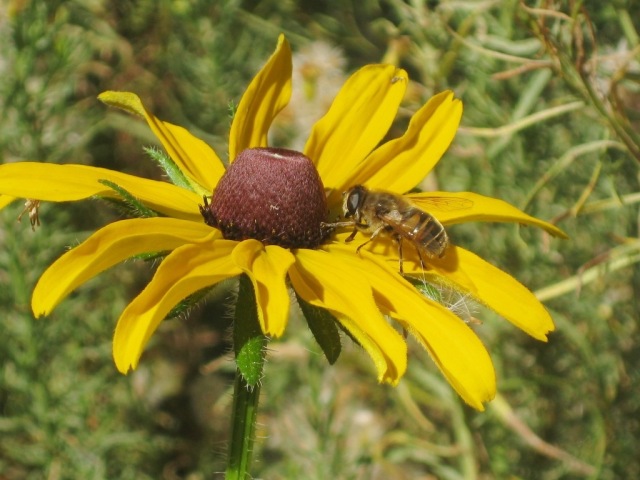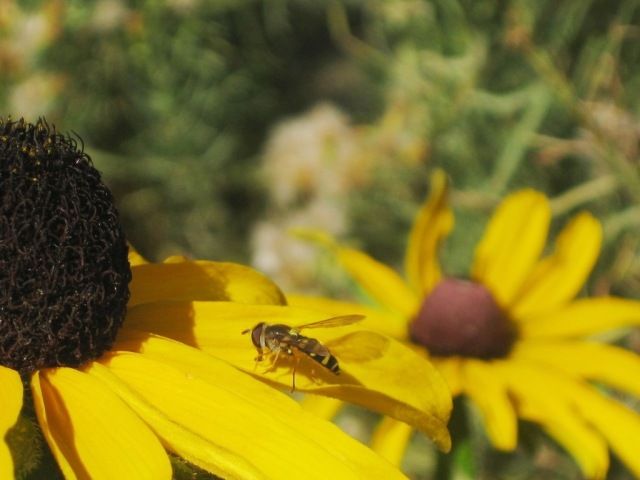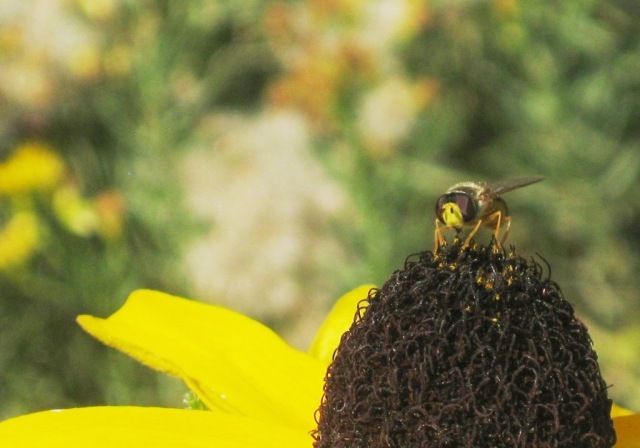Do you remember H bees?
I took photographs of these two, a bee and a wasp, today. I was reminded of when I was a child in Orange County, CA, when we used to catch what we called ‘H’ bees in our hands. After seeing the bees with the Hs on their backs we would know that they would not sting us.
Today, I thought I’d look up what kind of bee an H bee was, but was surprised to find no mention of it on Google, other than one person asking if anyone remembered them, saying that they had held them too, long, long ago.
Is there such a thing? Answer: Surprisingly, this bee and wasp are actually hover flies or flower flies in the Animal Family Syrphidae.
This “bee” is a drone fly, Eristalis tenax, sometimes called an “H” bee or “H” fly due to the H pattern at the top front of its abdomen.
This “wasp” is also a hover fly, probably in the genus Syrphus.
University of California, Davis’ BugGuide web site is a wonderful resource for checking IDs and viewing additional images of these insects here.
Thanks to Professor Emeritus Robbin Thorp, Department of Entomology, University of California, Davis for the ID.





63 comments